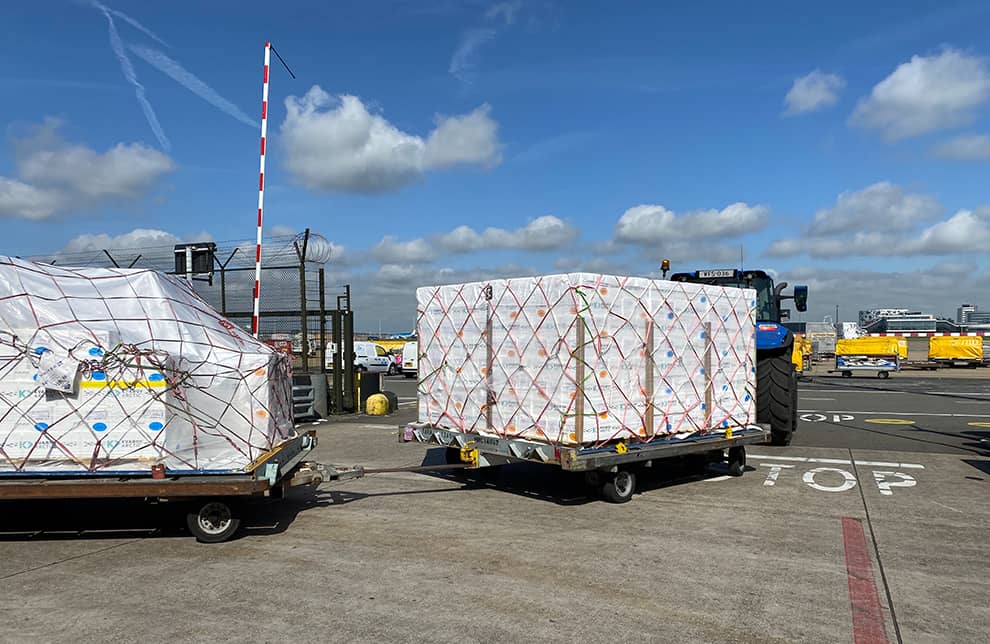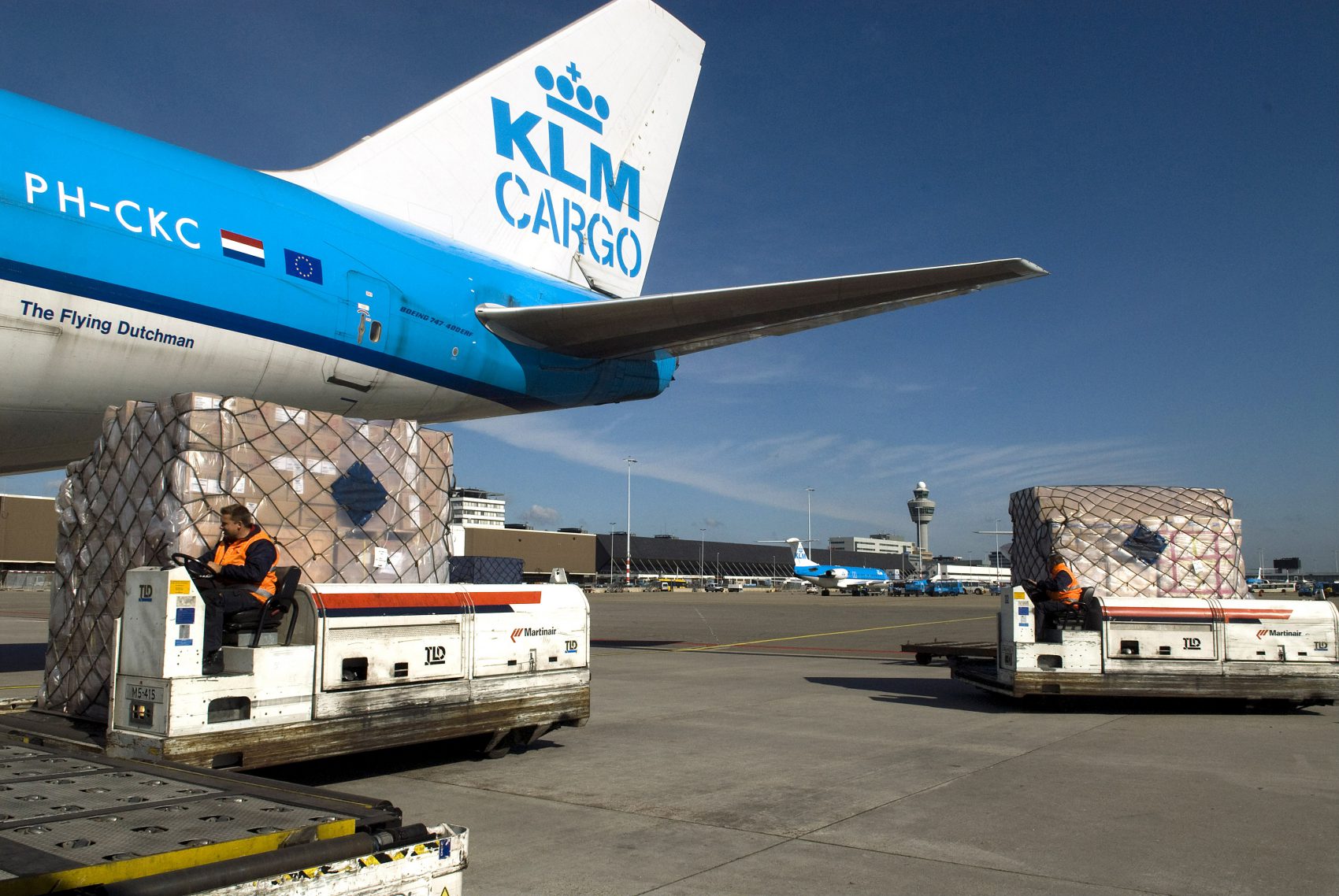Anne Marie van Hemert en Olaf van Reeden bespreken de toekomst van de cargocommunity op Schiphol.
Bron: Schiphol.nl.
Amsterdam Airport Schiphol’s cargo hub is where carriers, forwarders, handling agents and airlines come together. That requires streamlined processes, not least in the areas of connectivity and safety. At the same time, Schiphol has a clear goal: to eliminate CO2 emissions from its aviation processes by 2030. How will the cargo community develop in the coming years, what does the future hold and how are we preparing for it? Anne Marie van Hemert, Head of Aviation Business Development and Olaf van Reeden, Cargo Partnerships Director discuss the challenges ahead.


Deeds not words
As Head of Aviation Business Development, Anne Marie is involved in both the passenger and cargo sides of Amsterdam Airport Schiphol (AAS). “Cargo has a ‘walk the walk, don’t talk the talk’ mentality. I like that.”
Anne Marie gives lead to three teams: Cargonaut, Airline and Cargo Partnerships (ACP) and Forecast, Analysis and Capacity Management (FACT). Her colleague Olaf is Cargo Partnerships Director, member of the ACP-team. “We’re the link between Schiphol and the cargo airlines, as well as a number of co-makers,” he explains. “Co-makers are all the links in the cargo chain at Schiphol, the parties which play a role in transport and handling.”
Four pillars
Olaf and Anne Marie are constantly examining ways to keep improving the cargo hub. In operational terms, for example. “We would like to keep the entire community satisfied,” says Anne Marie. “Truckers, carriers, and handlers all have different wishes. That’s why we’ve drawn up a strategic plan that puts connectivity, process improvement, sustainability and safety first. It’s from those pillars that we’re looking to the future.”
Half a million flights
“When we talk about connectivity,” Olaf explains, “we mean all flights arriving at and departing from Schiphol. Annually, around 250.000 aircraft land here each year, and about the same number leave. The pandemic caused a major dip, but we expect to reach half a million again within a few years. We are not only talking about passenger and cargo flights, but also about combinations of the two. In many cases so-called ‘belly freight’ is carried in the hold of a passenger aircraft.”
More flights, more connectivity
Every flight creates extra connectivity, so Schiphol is trying to retain as many slots as possible. It is up to an independent co-ordinator to determine how these will be distributed. As Cargo Partnerships Director Olaf naturally hopes that plenty more slots for cargo flights will become available in the upcoming years. “Yet it is very important that the cargo and passenger sides of Schiphol work closely together. When an airline is considering a new route, it does not just only look at the expected passenger numbers. It also investigates whether freight can be carried as well – that makes a service a lot more profitable.”
Anne Marie also highlights the importance of cooperation. “You need passenger flights for your network. They put you on the map as an airport. Full freighters cannot do that on their own. But you would like to have a good balance, and that’s what we’re striving for.” Olaf sets out how. “What we can do is secure the available slots. And at any rate do everything in our power to make sure that the number of cargo slots does not fall in the coming years.”


Better chain cooperation
Because the cargo hub brings together so many different parties on a daily basis, it is vital to keep improving its processes. According to Anne Marie, that all starts with being a suitable location to do business with. “We look at area developments, for example: how attractive are we as a cargo hub? Together with my teams and the other parties involved, we are constantly thinking about how we can generate processes throughout the chain run more smoothly.”
In Olaf’s view, that chain should operate more as a whole. “For years now, everyone has been fighting for their own individual interests.” Anne Marie agrees. “The chain needs to be one integrated entity, and to achieve that we need to organise it well.”
Digital prenotification and automatic nomination
Schiphol is already proceeding vigorously with that integration. For example, the Smart Cargo Mainport Programme (SCMP) has introduced digital pre-notification. “Anyone wishing to use our cargo hub now has to submit their documentation in advance, in digital form,” Anne Marie explains. “That prevents failures and makes it easier to plan shipments. Resulting the process is more secure and more predictable. The entire chain benefits.”
Another new initiative is automatic nomination. “Which automatically assigns import shipments to the right forwarder. We used to do that manually, which was a lot more error-prone.”
Electric trucks
As well as being smarter and more efficient, the cargo community at Schiphol also needs to become more sustainable. Although in fact the two goals go hand in hand: a more efficient process is less wasteful as well. “We are taking a number of measures,” says Anne Marie. “For example, we aim to switch to electric trucks. At the moment they still run on diesel. Recently, we conducted a pilot with the so called ‘TaxiBot’, an unmanned electric aircraft tow tractor. Eventually, we strive to use these for cargo planes as well.”
But as Olaf adds, “It’s not just the transport side that has to be more sustainable, it’s also the housing. In the future, for instance, wherever possible, we would like to fit the hangars with solar panels. All these movements should contribute towards our goal of zero CO2 emissions in 2030.”
Safe transport
The final pillar in the strategic plan is safety. “Take pharmaceuticals,” says Olaf. “They have to be shipped under temperature-controlled conditions all the way from the factory to the patient. Or high-value cargoes, such as shipments of iPhones. Producers, forwarders, and recipients need to be confident that we are moving their freight safely and that as little as possible is damaged or lost. The more you have that process in order, the more reliable you are as an airport and the more businesses would like to cooperate with you.”
“Of course, you can’t guarantee that nothing will ever go wrong,” admits Anne Marie. “Mistakes happen in every working environment. It is up to us to make the process traceable, so that we know what has happened. Using cameras and data to see where cargo has been forgotten or dropped, for instance. In this area we work together with SmartLOXS, which facilitates access systems in our cargo zone. They keep track of what comes in and goes out.” And Schiphol’s goal for the coming years? “To be an open, transparent and smart airport, and at the same time we would always like to know who and what is on our site.”
